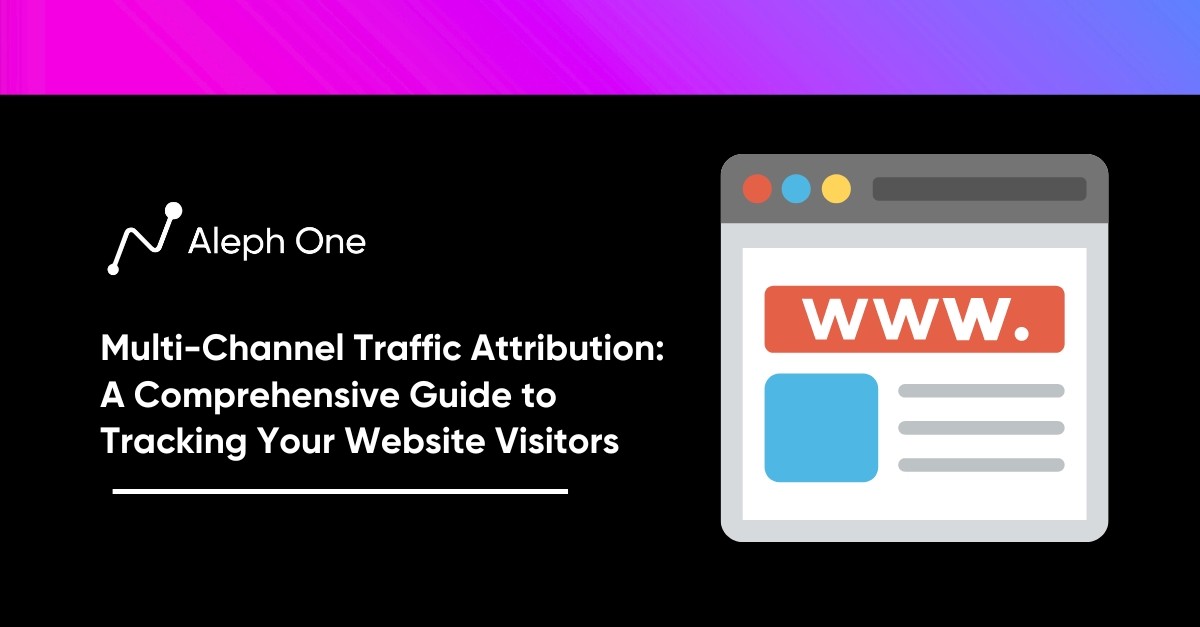Let’s work together to build something amazing. Share your project details and our team will reply to figure out the next steps to your success.

Launching a website or a mobile app can be pivotal in determining a startup’s success. As technology evolves, startups must carefully analyze their target audience to make informed choices that resonate with users’ device preferences. This article goes into the critical considerations startup founders should make when contemplating this decision, the nuances of audience demographics, platform-specific features, budget constraints, user engagement strategies, and the power of offline capabilities. Whether your startup is deciding on a mobile app, web-based, or Web App, choose the best platform for your startup.

Your Target Audience: Where Are Your Users?
One of the first things any startup needs to consider when deciding between a website or mobile app is their target audience. The device preferences of your potential users should significantly influence your platform choice.
Appealing to Millennials or Gen Z
If your startup is targeting millennials or Gen Z, for example, you’ll want to consider launching with a mobile app first. According to surveys, 86% of millennials own smartphones and conduct the majority of their web browsing on mobile. Generation Z, those born after 1996, are “mobile natives” and live their digital lives almost entirely on smartphones and tablets.
Older Generation or Professionals
On the other hand, if your target audience is older generation users or professionals, a website may make more sense as a first step. While mobile usage is increasing across all age groups, desktops and laptops remain popular with older demographics for work and productivity.
Determine Your Audience’s Device Preferences
The type of startup or product you have can also determine your audience’s device preferences. For example, a social networking app would likely appeal more to younger, mobile-centric users. In contrast, a B2B SaaS startup may find their audience more engaged on desktop.
Under How Your Target Audience Lives and Works
In today’s multi-device world, you can’t assume all your users will interact with your product in the same way. The key is understanding how people in your target audience live and work and which devices they prefer for different activities. You may find value in launching with a mobile-optimized website first to reach the broadest range of users, then building a dedicated mobile app to engage your most active mobile users.
Analyzing your audience and their device preferences is one of the most important first steps any startup can take. While it may require time and resources to research properly, it will ensure you are building your product to reach and engage the right users. The platform you launch, whether a website, mobile app, or a combination, can make or break your startup’s success.
Features That Work Best On Mobile
Some product features are inherently better suited for mobile apps than websites. For example, geolocation features allow apps to detect a user’s location and provide localized content or functionality. Push notifications enable apps to re-engage users by sending alerts about new messages, events, and updates. Offline access allows users to interact with apps even without an Internet connection, then sync data once back online.
Mobile-centric Feature Set – Uber and Instagram
Startups with a mobile-centric feature set may find more success launching a mobile app first. For example, Uber’s ridesharing service began as a mobile app to enable location-based booking and payments. The popular photo-sharing social network Instagram launched as a mobile app to allow on-the-go photo capture and sharing. These mobile-first startups were able to provide an experience uniquely tailored to mobile devices.
Mobile Games & Augmented Reality
An app may be the only option for startups with a functionality deeply integrated with a mobile experience. Mobile games, for example, rely on a touchscreen interface and gyroscope features only available on smartphones. Augmented reality apps like Pokémon Go use a device’s camera, GPS, and motion sensors to create an immersive experience. These interactive, hardware-intensive features can only operate through a mobile app.
Mobile-optimized Website a Budget Alternative to Apps
Of course, building a mobile app requires technical resources and a larger budget. Some startups may not have the capabilities or funding to develop an app, especially when first launching. In these cases, a mobile-optimized website can be an alternative to provide a good user experience on mobile devices. The website can then link to the app in the future once the startup is ready to build one.
A mobile app is not for every startup, but for those with a mobile-centric vision or feature set, an app should be strongly considered the primary platform. With most web traffic now coming from mobile devices, startups need to meet users where they are—and for many, that place is in their hands.
Budget: How Much Can You Afford to Build?
For early-stage startups, budget is always a key consideration when deciding whether to build a website or mobile app first. Developing an app typically requires more resources and funding than building a website. Native mobile apps need to be built separately for iOS and Android by platform-specific developers. A high-quality app can easily cost between $50,000 to $500,000 or more.
App vs. Mobile-optimized Website
In contrast, a mobile-optimized website can be built for a fraction of the cost by a single web developer in a shorter timeframe. For startups operating on a lean budget, launching a website is often the more feasible option to get up and running. Then, as funding and traction increase, the startup will be better positioned to invest in building a native mobile app.
Udemy – Mobile Optimized Website to Native Mobile Apps
Some startups have found success, starting with just a mobile-optimized website. For example, when the online learning platform Udemy first launched, they built a website to test their concept and see if they could attract users and instructors. Once they validated their business model and raised funding, Udemy made native mobile apps to provide a better experience for their growing base of learners accessing the service on the go. This progressive approach allowed Udemy to scale sustainably.
Raising Funds for Mobile App Development
However, for some startups, a mobile app is essential to the user experience from day one. Suppose a startup’s core features rely on mobile-specific functionality like geolocation, push notifications, or offline access. Launching with an app may be necessary, but isn’t possible because of budget constraints. In these cases, startups will need to raise funding to build the mobile app or find affordable development alternatives, e.g., cross-platform frameworks that can create iOS and Android apps.
The costs and technical challenges of building an app versus a website are significant factors for any startup to weigh. By analyzing the budget in the context of a startup’s priorities, target users, and key features, startups can determine whether to launch with an app or website first. With the right strategy, either can be a path to success and growth.
User Engagement: Will Your App Keep Users Coming Back?
High user engagement is crucial to success and growth for any digital product. Before deciding whether to build an app or website, startups need to consider how they will maximize user engagement on each platform.
Mobile Drive User Engagement
Mobile apps have some advantages for driving user engagement. Push notifications, for example, allow apps to re-engage users by sending them alerts and updates, even when the app isn’t in use. This helps bring users back to the app again and again. Apps can also utilize other engagement tactics like social sharing, gamification, and personalization. However, user engagement ultimately comes down to having an app that provides real value to users. An app must be helpful, engaging, and entertaining for users to stick with it for long.
Website Strategies to Keep Visitors Engaged
Websites also have strategies for keeping visitors engaged. For example, a blog or content platform can leverage email newsletters to re-engage readers. By sending regular updates, they encourage visitors to return to the website to read new posts. Websites can also use social sharing buttons, email sign-up forms, and personalized content recommendations to increase engagement. Like apps, the most impactful tactic is simply providing high-quality content and resources that users find helpful or interesting.
How to Implement Engagement Strategies
When evaluating options, startups must consider how they will implement engagement strategies on each platform. They need to determine what types of content, notifications, or features will keep target users returning. For some startups, push notifications and an offline experience may be highly valuable for user engagement. For others, regularly updated blog content and email newsletters may be more effective.
The platform with the strongest user engagement strategies is typically the better choice. However, startups must also weigh user engagement against other factors like budget, technical capabilities, and user preferences. An app may drive higher engagement, but if the startup cannot afford to build it or their audience primarily uses desktop, a website may still be the best place to start. With the right strategies, startups can achieve strong user engagement and success on either platform. The key is understanding their users and building the best experience for them, wherever they are.
The Power of Offline
Mobile apps have a significant advantage over websites because they can work offline. Users can access the app and its content even without an Internet connection. This allows people to use apps in areas with poor connectivity, like subways, airplanes, or remote locations. It also means the app is available even when Internet access is disrupted.
Duolingo – Offline Learning
Some startups have successfully launched mobile apps first because their key features were optimized for offline use. Language learning app Duolingo, for example, allows users to complete lessons offline and then sync their progress once back online. The ability to learn on the go without relying on Internet connectivity has driven high engagement and frequent app usage.
Google Maps
Similarly, Google Maps was initially launched as a mobile app so people could get turn-by-turn navigation directions even without data or WiFi. By offering offline maps and navigation, Google Maps became essential for any road trip or transit in unfamiliar areas. This offline functionality and user convenience propelled the app to over 1 billion downloads and a dominant position in the maps and navigation space.
Seamless, Uninterrupted Experience
For startups, the power of offline is the opportunity to provide a seamless, uninterrupted experience for users. When key features of an app work offline, it gives people more flexibility and control in how and when they use the product. This leads to higher satisfaction, more frequent usage, and loyalty to the app over time.
Downsides of Offline Apps
Of course, the downside of offline functionality is the technical challenge of enabling it. Startups must consider how data will be synced once the device is back online and any security implications. However, it may be worth the investment for startups where offline access to features could significantly improve the user experience. Using an app anywhere, anytime – regardless of connectivity – is a compelling advantage that can drive growth and success.
While building a mobile app typically requires more resources than a website, creating an offline user experience can be a crucial differentiator. For startups looking to maximize engagement and build a loyal customer base, enabling offline access is a strategy that could yield substantial long-term benefits. By launching a mobile app first with offline features, startups can provide users with convenience and control, leading to a stickier product that is hard to live without.
Progressive Web Apps: The Best of Both Worlds
Progressive Web Apps (PWAs) provide an appealing solution for startups by offering the best websites and mobile apps. PWAs are web apps that utilize new web capabilities to provide an app-like user experience. They work across all devices, offer offline functionality, push notifications, and more.
Benefits of Progressive Web Apps
PWAs provide a flexible solution for startups to reach the widest range of users. They can be built once and deployed across operating systems and devices, reducing development costs. Startups can build a PWA first to test their concept and see how users respond. Then, they can develop native mobile apps as they scale to provide an even richer experience for their most engaged users.
Pivot and Adapt to Target Audience
A PWA strategy allows startups to pivot and adapt to their audience. If a startup finds their web app performs well on mobile, they can double down on the PWA experience. If mobile usage outpaces web, they can shift focus to building robust native apps. PWAs provide a future-proof solution in an era where technology is rapidly changing. They allow startups to meet users wherever they are—on the web, mobile web, or in an app.
Drive High Engagement Features
With a PWA, startups can utilize features that drive high engagement, like push notifications, full-screen experiences, and offline functionality. Studies show that users spend more time in PWAs compared to typical websites. Startups have found success acquiring new users through the web and re-engaging them through push notifications and an app-like experience.
PWAs Represent an Innovative Solution for Station
While PWAs provide significant advantages, they may not yet match all the functionality of native mobile apps. For some startups, particularly those with complex features, native apps may still be preferable. However, for many early-stage startups, a PWA is an ideal way to launch, test concepts, and reach the widest range of potential users across all devices. PWAs represent an innovative solution for startups to build web experiences that are nearly indistinguishable from native apps. With a PWA, startups can have the best of both websites and apps in one flexible, future-friendly platform.
FAQ
How can a start-up determine its target audience and understand their device preferences?
Determining the target audience and understanding their device preferences requires strategic and well-planned market research. A start-up should conduct surveys, focus group discussions, and online research to gather valuable insights about their potential users’ demographics, preferences, and behavior. Studying trends, competitors, and industry reports can offer further clarity.
What factors should be considered when deciding the ideal platform for launching a start-up - website, mobile app, or a combination of both?
When deciding the ideal platform for launching, a start-up needs to consider several factors. Understanding the target audience’s device preferences is pivotal. If your potential users are younger and spend significant time on mobile devices, a mobile app may be the best fit. However, a website may serve you better if your user base includes older professionals who primarily use desktops. Other factors include the type of product or service you’re offering, the resources required for development, and the technical capabilities available.
How can start-ups maximize user engagement in their digital products?
User engagement can be maximized by delivering a meaningful and valuable user experience. This includes providing high-quality content, implementing features that re-engage the users, and offering a seamless, user-friendly interface. In the instance of mobile apps, techniques such as push notifications, offline access, and personalized experiences can enhance engagement. Meanwhile, websites can keep users returning by providing updated content, newsletters, and individualized recommendations. Regardless of the platform, the goal should be to understand the users’ needs and preferences and cater to them most effectively.
Get the latest news and updates from Aleph One in your inbox.



